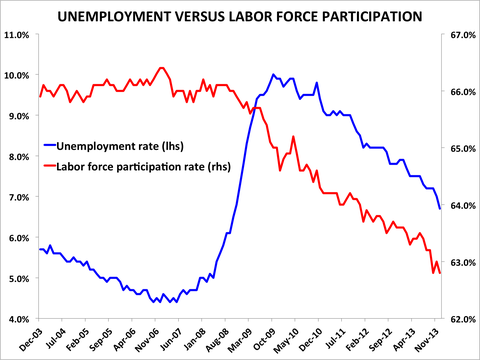Contents:


For example, an straight line depreciation is paid but you fail to note receipt. Or you purchase a tablet but don’t record this in your accounting system. This can easily happen if you misplace documentation—a receipt or invoice—so that it never gets recorded.

The post-closing trial balance verifies the debits equal the credits and that all beginning balances for permanent accounts are in place. The post-closing trial balance is the last step in the accounting cycle. It is prepared after all of that period’s business transactions have been posted to the General Ledger via journal entries. The post-closing trial balance can only be prepared after each closing entry has been posted to the General Ledger. The purpose of closing entries is to transfer the balances of the temporary accounts (expenses, revenues, gains, etc.) to the retained earnings account.
Parts of a Journal Entry
Say you have a total of $70,000 in accounts receivable, your allowance for doubtful accounts would be $2,100 ($70,000 X 3%). If the doubtful debt turns into a bad debt, record it as an expense on your income statement. When you create an allowance for doubtful accounts, you must record the amount on your business balance sheet. A reserve for doubtful debts can not only help offset the loss you incur from bad debts, but it also can give you valuable insight over time. For example, your ADA could show you how effectively your company is managing credit it extends to customers.
Make the most of your team’s https://1investing.in/ by automating accounts receivables tasks and using data to drive priority, action, and results. Monitor and analyze user performance, ensuring key actions quickly. The post-closing trial balance differs from the adjusted trial balance. A post-closing trial balance checks the accuracy of the closing process. When a business enterprise presents all the relevant financial information in a structured and easy to understand manner, it is called a financial statement. The purpose of financial statements are to provide both business insiders and outsiders a concise, clear picture of the current financial status in the business.
Compensating error
For example, the journal entry for an item that has been sold on credit will record the value of the sale as a debit in the accounts receivable and as a credit in the sales account. The trial balance tests the equality of a company’s debits and credits. It lists all of the ledger, both general journal and special, accounts and their debit or credit balances to determine that debits equal credits in the recording process.
They affect at least two accounts, and the total debits must equal the total credits. They are the foundation of accounting and bookkeeping since all data found in the general ledger and financial statements originate from the journals. Year-end accruals are adjusting entries to make sure revenue and expenses are recorded in the correct fiscal year. Prepaid expenses are payments made in advance for goods and services that are expected to be provided or used in the future.
Indicate, in the sequence in which they are made, the three required steps in the accounting cycle that involve journalizing. The use of a worksheet is an optional step in the accounting cycle. If Laura does not accrue the revenues earned on January 31, she will not be abiding by the revenue recognition principle, which states that revenue must be recognized when it is earned.
What Are Some Examples of Journal Entries?
Journal entries have different types—such as opening, adjusting, and reversing entries. Then as the company earns some of the revenues, the account Unearned Revenues will be debited and an income statement account such as Service Revenues or Fees Earned will be credited. As the deferred or unearned revenues become earned, the credit balance in the liability account such as Deferred Revenues needs to be reduced. The usual journal entry used to record this transaction is a debit to the interest receivable account and a credit to the interest income account. The advantage of using the AV is that it can be scheduled to auto reverse in the next fiscal year.
Expenses are recorded in expense accounts with a debit entry. Accruals are revenues earned or expenses incurred which impact a company’s net income, although cash has not yet exchanged hands. Many accounting software systems can auto-generate reversing entries when prompted. On the other hand, an accrued expense is an event that has already occurred in which cash has not been a factor. Not only has the company already received the benefit, it still needs to remit payment.
This leaves the original $18,000 expense in the income statement in January, but now creates a negative $18,000 expense in the income statement in February. Recording accrued revenue as a part of accrual accounting can help a business be agile by anticipating expenses and revenues in real-time. It can also help monitor the profitability of the business and identify potential problems well in advance.
Trump’s Travel Ban Is Upheld by Supreme Court (Published 2018) – The New York Times
Trump’s Travel Ban Is Upheld by Supreme Court (Published .
Posted: Tue, 26 Jun 2018 07:00:00 GMT [source]
Go back and study the relationships between financial statement items summarized at the end of section one of this unit. Once the worksheet has been completed, the financial statements are prepared. Next, any adjusting and closing entries are entered in the journal and posted to the ledger.
Accounting without the reversing entry:
The trial balance is a part of the double-entry bookkeeping system and uses the classic ‘T’ account format for presenting values. A trial balance only checks the sum of debits against the sum of credits. If debits do not equal credits then the accountant or bookkeeper must determine why. A reversing entry makes it easy and convenient to record future transactions and is made at the beginning of the next accounting period. It’s an optional step in the accounting cycle but can facilitate future accounting transactions without making additional journal entries.
- For example, a company wants to accrue a $10,000 utility invoice to have the expense hit in June.
- What adjustment is needed on December 31 in relation to salary expense.
- Decides to leave the office it rented on Dec.31,2002, do you think that it will be refunded the amount it paid of Jan. 1,2002?
- A post-closing trial balance is a trial balance taken after the closing entries have been posted.
On January 7th, Paul pays his employee $500 for the two week pay period. Paul can then record the payment by debiting the wages expense account for $500 and crediting the cash account for the same amount. Reversing entries are journal entries are used to cancel or neutralize entries made in the previous accounting period.
For example if Company X wanted to make an adjustment for $600 in unpaid wages, it would debit that amount from the wages expense account and credit it to the wages payable account. You accrue $10,000 of revenue in January, because the company has earned the revenue but has not yet billed it to the customer. You expect to invoice the customer in February, so you create a reversing entry in the beginning of February to reverse the original $10,000 revenue accrual. The final billing, for a total of $12,000, is completed later in the month. The net result is the recognition of $10,000 in revenue in January, followed by the recognition of an additional $2,000 of revenue in February. The software then automatically creates the reversing entry in the following period.
- The account is debited for expenses and credited for revenues.
- Both types of reversing entries work the same as far as debiting and crediting your general ledger.
- From the trial balance, a company can prepare their financial statements.
- This error must be found before a profit and loss statement and balance sheet can be produced.
- We’re dedicated to delivering the most value in the shortest amount of time, equipping you to not only control close chaos, but also foster F&A excellence.
- For the year 1998, the end of the fiscal year, Dec. 31, falls on Wednesday.
The trial balance is usually prepared by a bookkeeper or accountant. The bookkeeper/accountant used journals to record business transactions. The journal entries were then posted to the general ledger.

Whether you are deploying for the first time or creating a sustainable education program for maximum value creation, explore how you can take the next steps to upskill your users. F&A teams have embraced their expanding roles, but unprecedented demand for their time coupled with traditional manual processes make it difficult for F&A to execute effectively. Transformation is necessary to address these challenges. Global brands and the fastest growing companies run Oracle and choose BlackLine to accelerate digital transformation. BlackLine delivers comprehensive solutions that unify accounting and finance operations across your Oracle landscape.